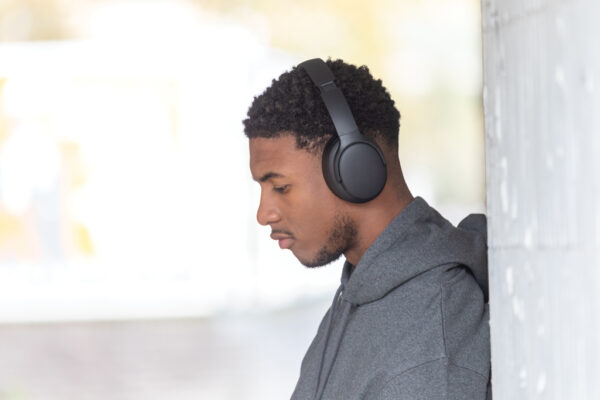
Setting up a computer involves more than just choosing the right monitor or processor. Wireless peripherals like headphones, earphones, keyboards, and mice are critical for a seamless and efficient experience. These devices offer convenience and flexibility, especially for those who prefer a clutter-free workspace. This article explores key considerations when purchasing wireless peripherals, helping you make informed choices.
Understanding Wireless Connectivity Options
Wireless peripherals operate through various connectivity options, including Bluetooth, RF (radio frequency), and infrared. Each technology has unique features, and your choice will depend on your specific needs.
Bluetooth is commonly used in wireless headphones and earphones. This technology allows for a stable connection over a reasonable range, typically up to 10 metres. Bluetooth devices can easily connect with multiple devices, making them suitable for those who need to switch between a laptop, smartphone, or tablet.
RF technology, often seen in wireless keyboards and mice, operates through a USB dongle. This option provides a more stable and quicker response time compared to Bluetooth, making it ideal for gaming or tasks requiring fast input. However, RF peripherals usually require a dedicated USB port, which might be a limitation for laptops with limited ports.
Infrared, though less common, is another option that requires a direct line of sight between the peripheral and the receiver. This method is less reliable in environments with obstacles or movement.
Carefully consider your usage needs and the environment in which you will use your wireless peripherals. Each connectivity option has advantages, but selecting the most appropriate one for your setup is essential for optimal performance.
Battery Life and Charging Considerations

Wireless peripherals rely on batteries, making battery life a crucial factor in your purchasing decision. Longer battery life ensures that your devices remain operational during critical tasks, reducing the need for frequent recharging or battery replacements.
Wireless headphones and earphones, particularly those used for long listening sessions, should offer substantial battery life. Look for devices with at least 20 hours of battery life, allowing for extended use without interruption. Consider peripherals that support fast charging, enabling quick boosts in battery life with just a few minutes of charging.
For wireless keyboards and mice, battery life can vary significantly based on usage. Keyboards typically have a longer battery life than mice, sometimes lasting several months on a single charge. Mice, especially those with advanced features like adjustable DPI settings, may require more frequent charging. Opt for devices with rechargeable batteries to reduce waste and lower ongoing costs.
Evaluate how often you use these peripherals and select devices that align with your usage patterns. Devices with power-saving features, such as automatic sleep mode, can further extend battery life, providing convenience and reliability.
Compatibility and Software Integration
Compatibility is a vital consideration when buying wireless peripherals. Ensure that the devices you choose are compatible with your operating system and other devices in your setup. Many wireless peripherals offer additional features through companion software, which can enhance functionality and provide customisation options.
Wireless headphones and earphones often come with apps that allow you to adjust sound profiles, update firmware, or even locate lost devices. These apps provide added value, enabling a personalised experience that suits your preferences.
Wireless keyboards and mice may include software for customising key functions, macros, and lighting effects. Gamers and professionals can benefit from these customisation options, tailoring their peripherals to specific tasks or workflows.
Before purchasing, verify that the peripherals’ software is compatible with your operating system and that it provides the features you need. Ensuring compatibility prevents potential issues and allows you to make the most of your investment.
Ergonomics and Comfort
Comfort is a critical aspect when choosing wireless peripherals, such as wireless mouse and keyboard, especially for those who spend long hours working or gaming. Ergonomically designed devices can reduce strain and prevent long-term discomfort, enhancing your overall experience.
Wireless headphones and earphones should fit comfortably and securely. Consider the design, such as over-ear, on-ear, or in-ear models, and choose one that suits your preferences. Over-ear models offer superior noise isolation and comfort, making them ideal for extended listening sessions. In contrast, in-ear models are lightweight and portable, suitable for on-the-go use.
Wireless keyboards and mice should also prioritise ergonomics. Look for keyboards with a comfortable key layout and responsive keys that reduce typing fatigue. Ergonomic mice with adjustable DPI settings allow for smoother and more precise movements, preventing strain on your hand and wrist.
Testing these peripherals before purchasing is advisable, as personal comfort can vary significantly. Ergonomically designed peripherals enhance your productivity and enjoyment, making your computer setup more efficient and enjoyable.
Conclusion
Selecting the right wireless peripherals for your computer setup involves careful consideration of connectivity options, battery life, ergonomics, and compatibility. By focusing on these factors, you can create a more efficient and enjoyable workspace.
For high-quality wireless headphones and keyboards, visit Harvey Norman Singapore today to explore a wide selection that meets your needs.
